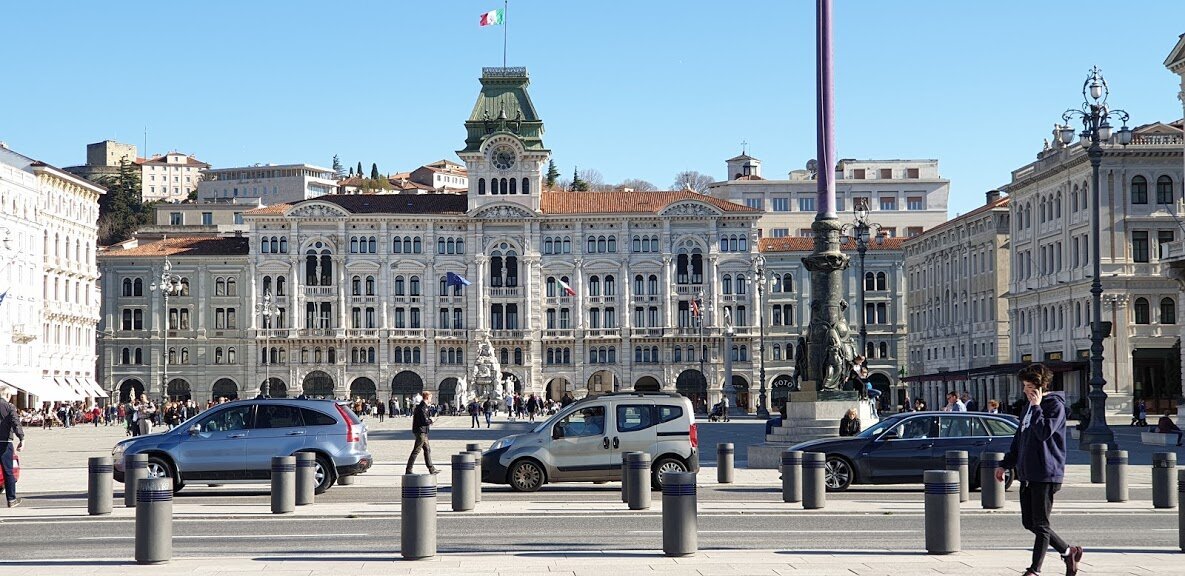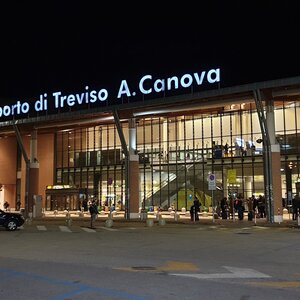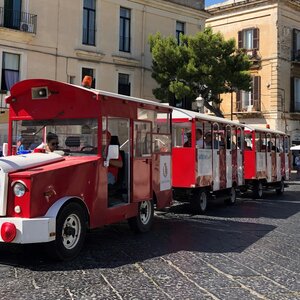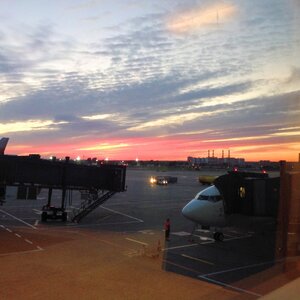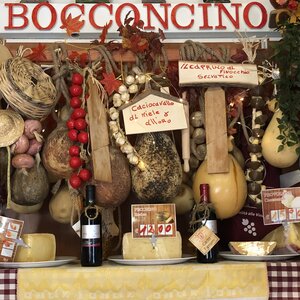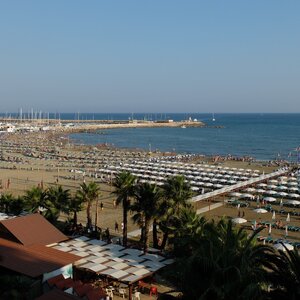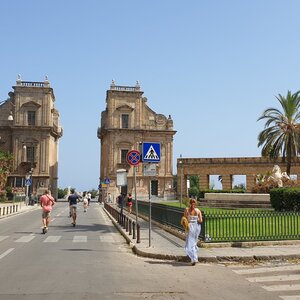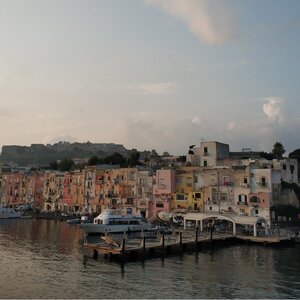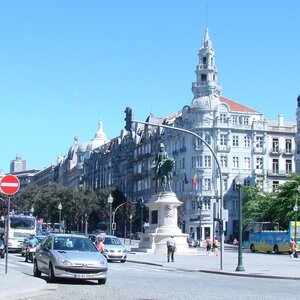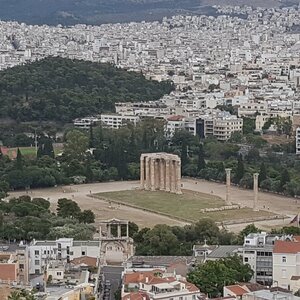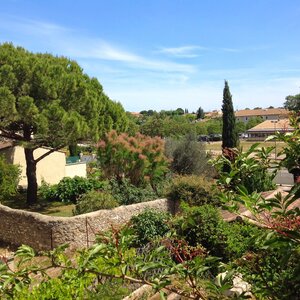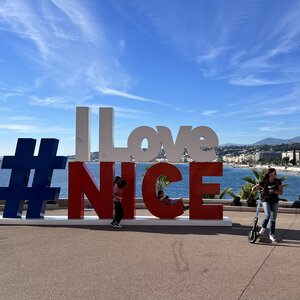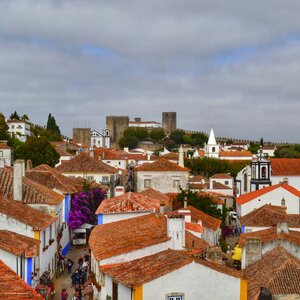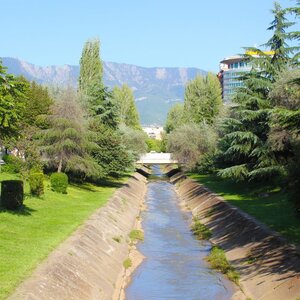Even Julius Caesar mentioned Trieste in his "Notes on the Gallic War". In his work, the city was named Tergestus and was one of the steps in the conquest of Gaul. The ancient city appeared on the hill of San Giusto, where the castle now stands and offers a breathtaking view of the Gulf of Trieste.
In the fourteenth century, to escape Venice, Trieste voluntarily fell under Austrian rule. It was a free imperial city, the capital of the Austrian seaside and often the only seaport of the Habsburg Empire. It was strategically important for Italy to take this large and rich port, where by the 19th century the bulk of the population was Italian. To get it, the Italian monarchs even got involved in World War I. The plan succeeded, and after the war Italy received the former Austro-Hungarian possessions around Trieste - they formed the Venice-Giulia region. Later, some of these territories had to be given to Yugoslavia, but Trieste remained Italian.
Today 200 thousand people live in Trieste. The city is distinguished from the rest of Italy by its grand Austro-Hungarian architecture and is world famous for the Barcolana, an annual yacht race. It is also home to Europe's only segregated beach for men and women.
Piazza Unita (Unity Square)
The starting point of any itinerary in Trieste is Piazza Unita (Unity Square). This square is one of the largest in the world in terms of size and the largest of the squares facing the sea. Around it is concentrated most of the most ceremonial sights of the Austro-Hungarian period: 7 palace buildings of XIX-early XX centuries in Art Nouveau style. All the main festivities of the city take place here. For ships entering the port, Piazza Unita was supposed to symbolize the power of the Austro-Hungarian Empire.
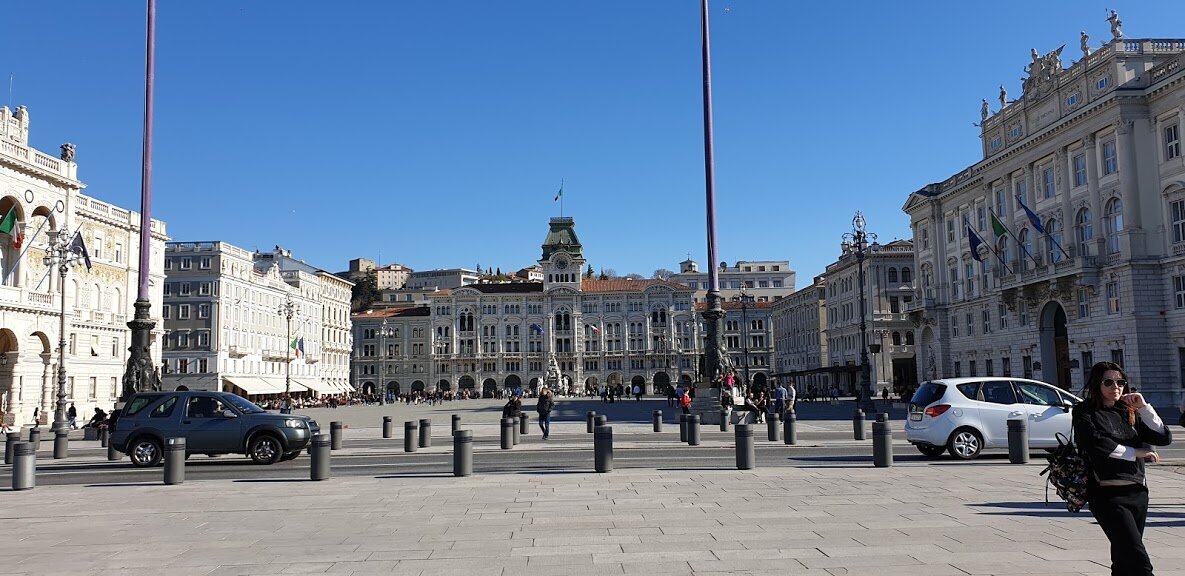

The square used to be a parking lot for ships: in the evening, blue lights indicate the boundary where the water reached. The square was laid out in the XIX century, but has witnessed epochal historical events: in 1914 a ship with the bodies of Archduke Franz Ferdinand and his wife Sophie docked here - their murder was the occasion for the First World War. In 1918 the destroyer "Audace" arrived here, announcing the end of the war and the annexation of Trieste to Italy. And in 1938, in this square, Mussolini announced the introduction of racial laws.
The historic Caffè degli Specchi has stood on this square since 1839: an Austrian-style café, it was the "drawing room of Trieste" where the fate of the city and the region was decided. A cup of espresso costs €1 at the bar and €3 at a table.
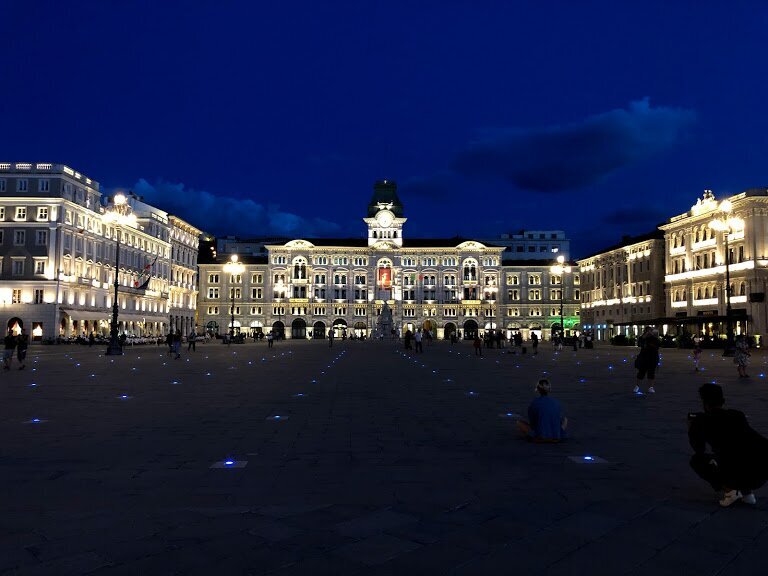
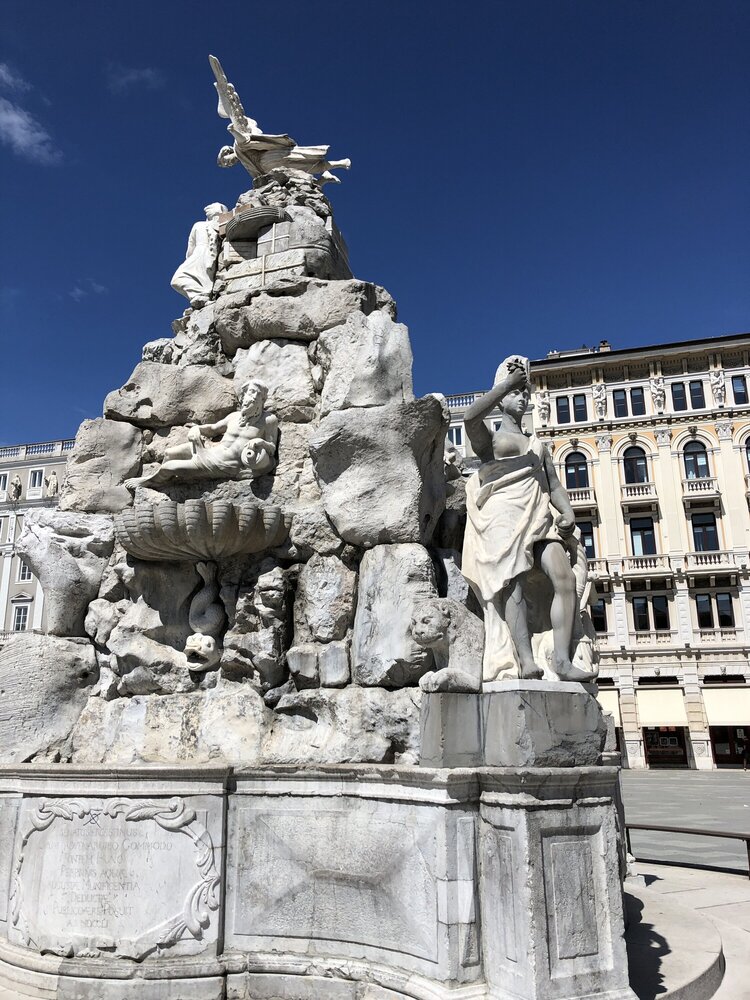
Today, the palaces around the square house the municipality and government of Trieste and Friuli-Venezia Giulia. There are two fountains in the square: the Venus Fountain and the Four Continents Fountain. The latter symbolized the cosmopolitanism of Trieste as a port city, linking all the then known continents, in the composition they depict figures of people with animals: Europe with a horse, Asia with a camel, Africa with a lion and America with a crocodile. Oceania-Australia had not yet been discovered. Allegorical figures of the River pour water from their pitchers into the basins below; below, water spurts from the mouths of four dolphins, falling back into large pools. Above, the Angel of Glory with outstretched wings towers over the figure of young Trieste lying on karst cliffs surrounded by barrels, bales of cotton and ropes.
During the weeks of Advent, the city's main creche is set up in Piazza Unità, which stands until January 6.
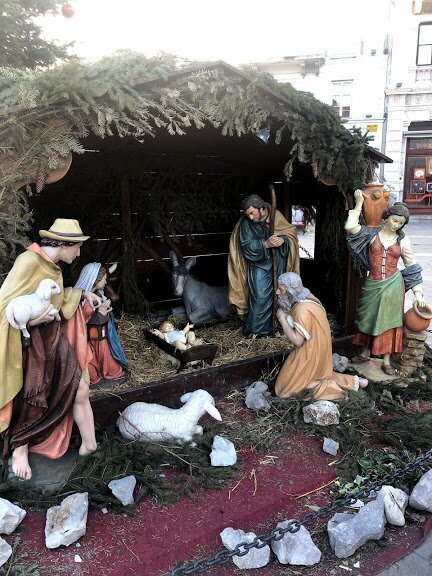
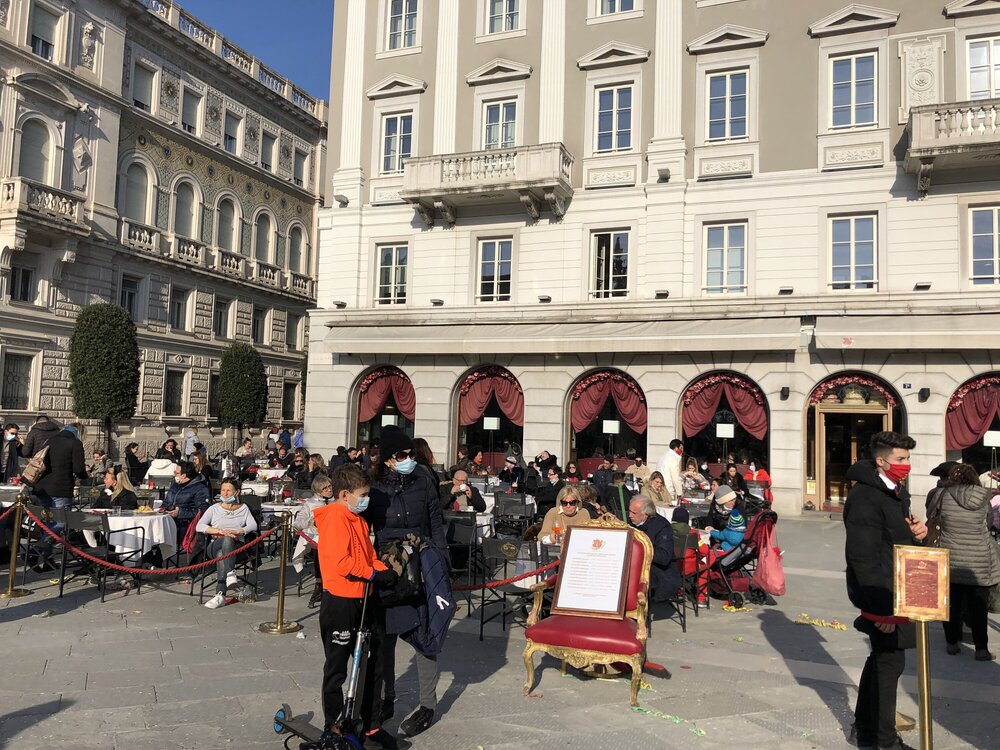
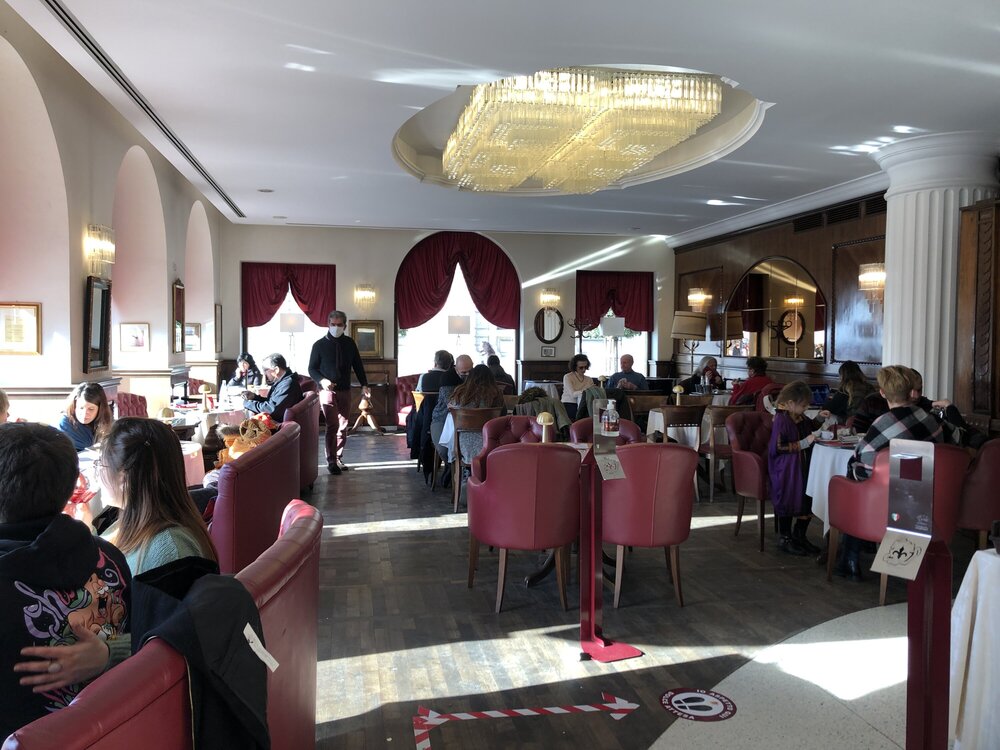
Molo Audace.
It's not just a pier and a walkway 200 meters into the sea. The Audace Pier is a symbol of Trieste's annexation to Italy: the USS Audace docked here in 1918.
In winter, at the far end of the pier, due to the wind rose, one can feel the full power of the northern Bora, a wind whose speed reaches 100 kilometers per hour. From the name of Bora came "storm" in Slavic languages. Be careful if you don't want to swim in icy water: in winter, on the worst days, the Bora knocks you off your feet.
Canal Grande
It's a strange landmark, but you won't pass it by while walking around the center of Trieste. "The Grand Canal" is a memory of the once large canal that carried goods from the port to the commercial center of old Trieste. Now the canal is almost completely filled in, with only a small part remaining, going to the sea from the church of San Antonio. And somewhere in the canal an old inoperable torpedo boat is sunk.
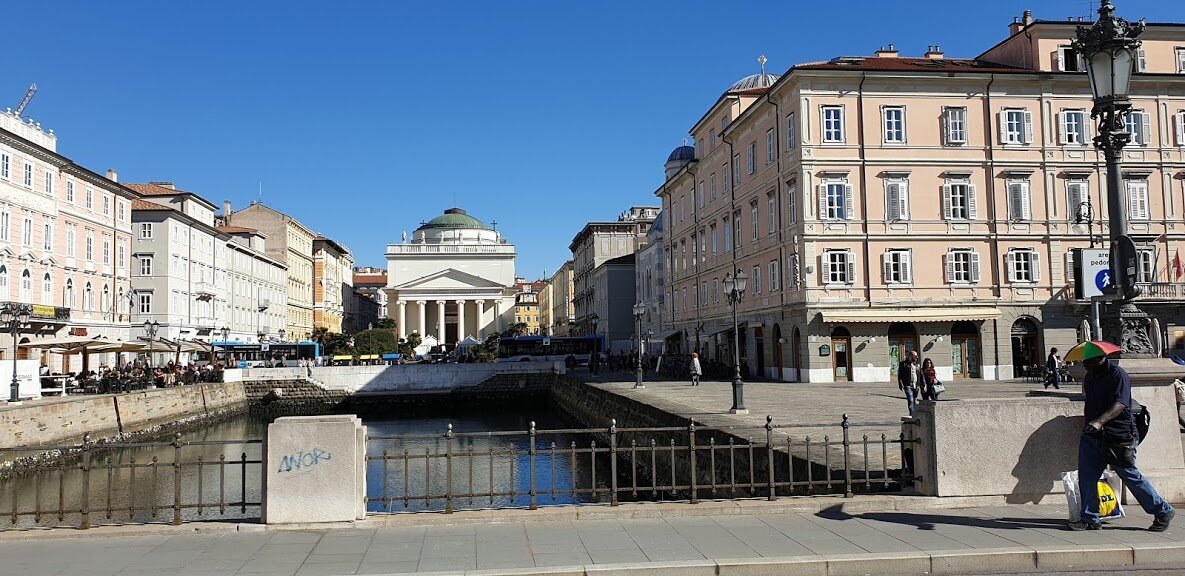
The neighborhood was built in the 18th century during the reign of Empress Maria Theresa and is named after her - Borgo Teresiano. The canal ends with the San Antonio Square, where the neoclassical church of the same name stands, reminiscent of the Roman Pantheon inside. Next to it, as a symbol of 19th century religious tolerance, is the Serbian Orthodox Church of St. Spiridon, built in Byzantine style of pearly white stone from the Istrian peninsula.
Near the square, the historic Stella Polare café is still open. The canal was once crossed by three lift bridges. Now one historic bridge Ponte Rosso remains and a new pedestrian bridge has been added to it. On the Via Roma bridge there is a life-size statue of Irish writer James Joyce - he lived here before World War I.
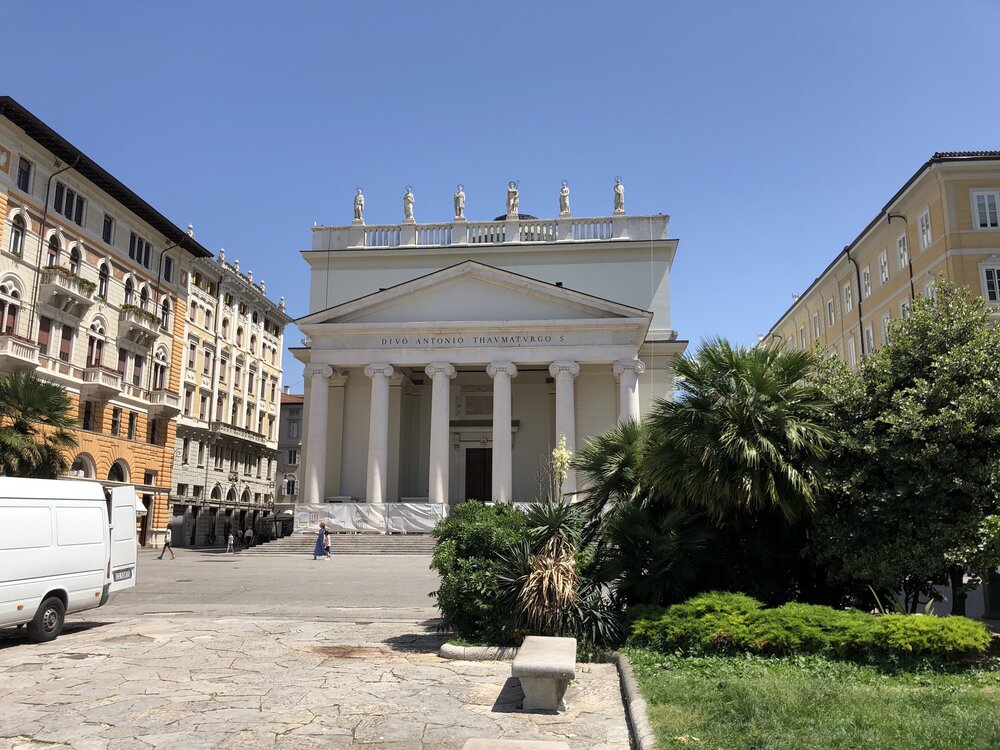
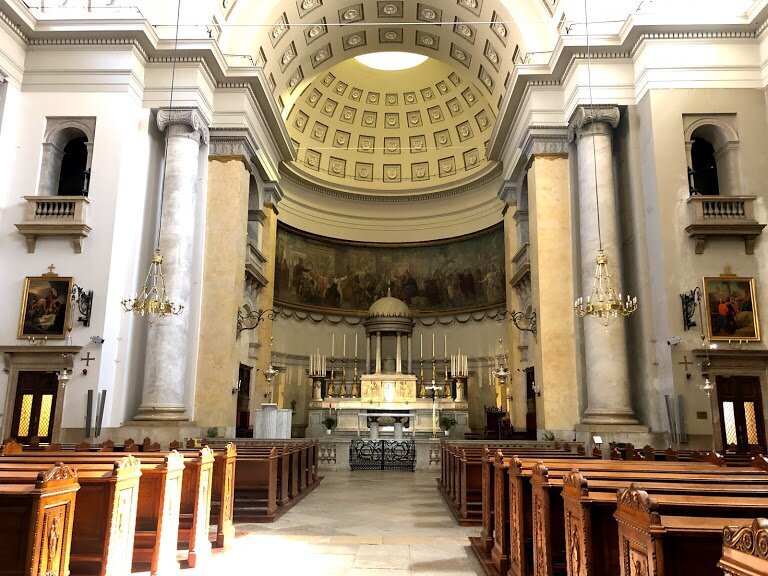
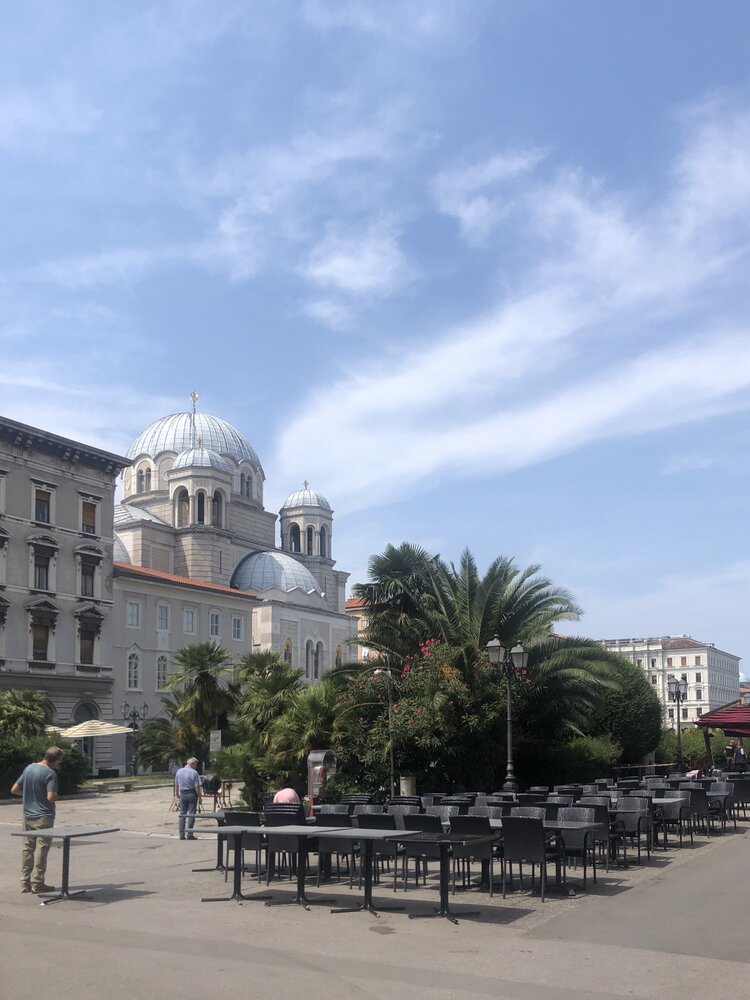
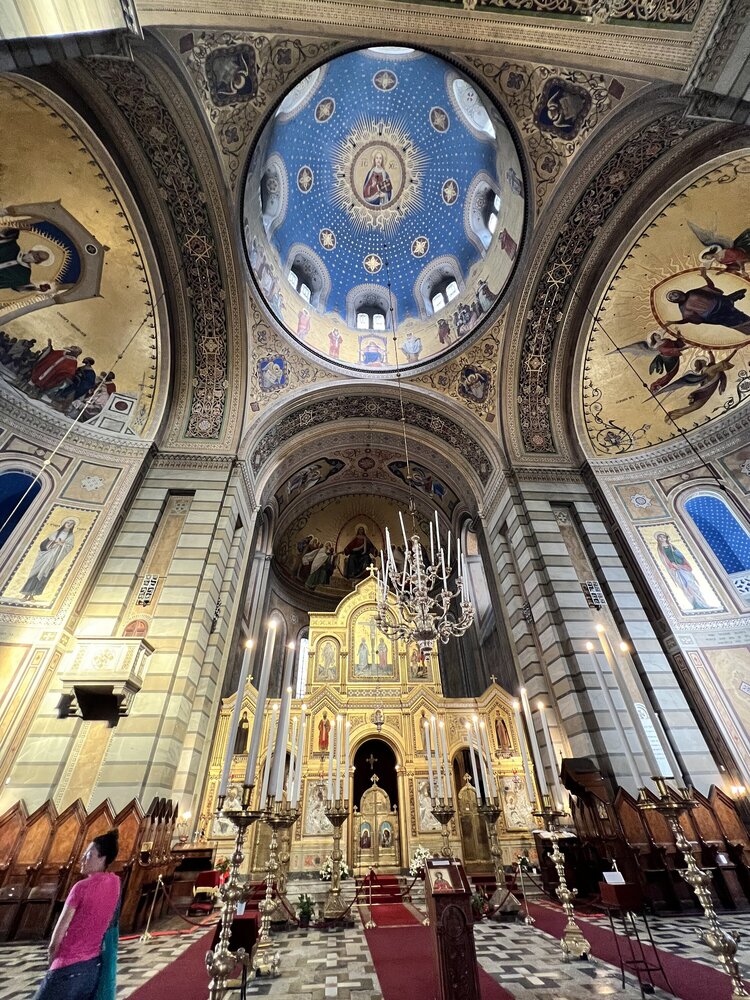
Roman Theater (Teatro Romano)
The amphitheater was built for gladiatorial fights sometime between the 1st and 2nd centuries AD and could seat 3,500 spectators.
Scientists guessed about its existence since the XIX century, but found it only during excavations in 1938. Perhaps it was because the walls had been buried for so long that they have survived to this day in their original form.
You can see the theater at any time, but only from the outside, from behind the fence. You can only get inside by special request. The sculptures that were once in the theater are now on display in the Lapidarium near the Basilica of San Giusto.
- Website
- Open: round the clock
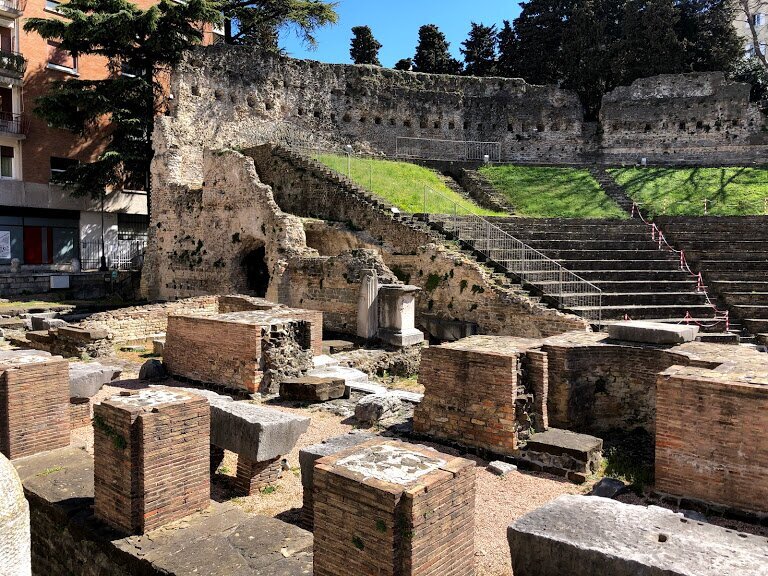
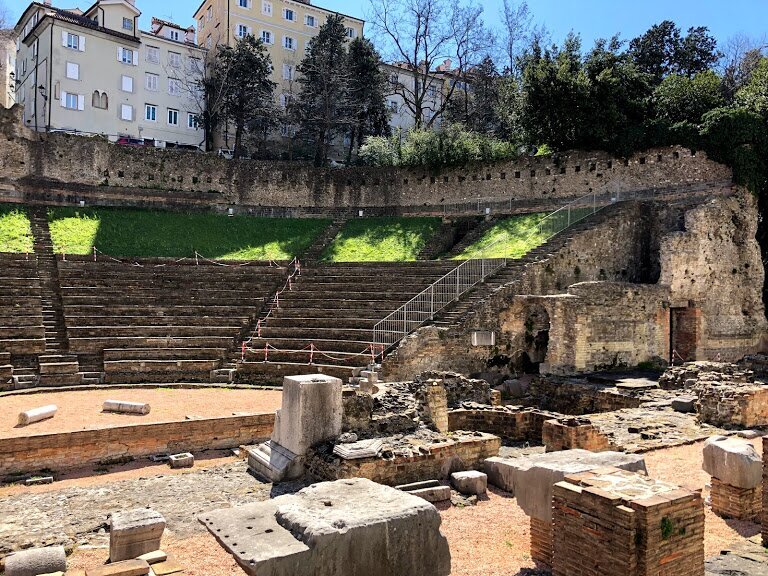
Arco di Riccardo (Arch of Riccardo)
There are few artifacts from the ancient Roman period left in Trieste, and one of them is a gate from around the first century BC that was part of the city wall. Little is known about them: scholars cannot even decide on the origin of the name.
There are few such ancient gates left in the whole of Europe: this one has been standing for the third millennium.
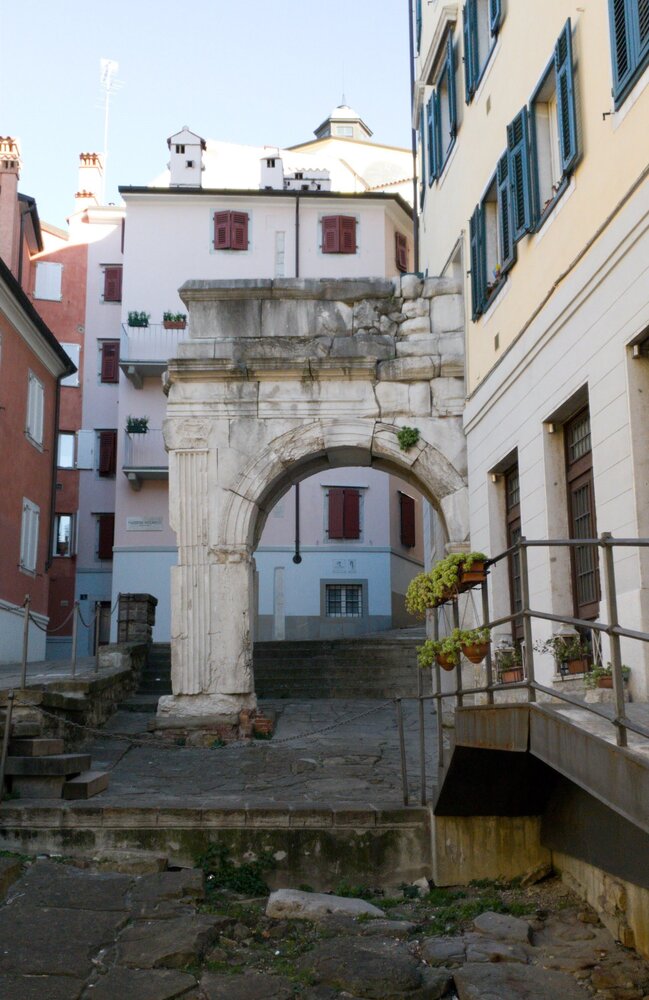
Cathedral of San Giusto (di San Giusto)
The main Catholic Church is located in the ancient heart of the city - on the hill of San Giusto. On this hill the ancient town of Tergeste appeared, and the first early Christian temple here was built in the VI century on the remains of the ancient Roman Capitoline Temple - this was the name of the temples dedicated to the main Roman gods: Jupiter, Juno and Minerva. Remains of 5th century Roman mosaics can still be seen in the modern floor.
In the IX century, two basilicas were built on the ruins of an early Christian church: one in honor of Our Lady, the other in honor of St. Justus (Iusta, or Giusto in Italian), the patron saint of the city. In the XIV century both basilicas were united into one cathedral, a bell tower and a common facade with an early rosette window were added. The central nave of the present cathedral is the most recent construction, while the side aisles retain the original Byzantine mosaics of the XII-XIII centuries: Madonna and Child and Jesus surrounded by two early Christian martyrs-patron saints of Trieste - Justus and Cervolo.
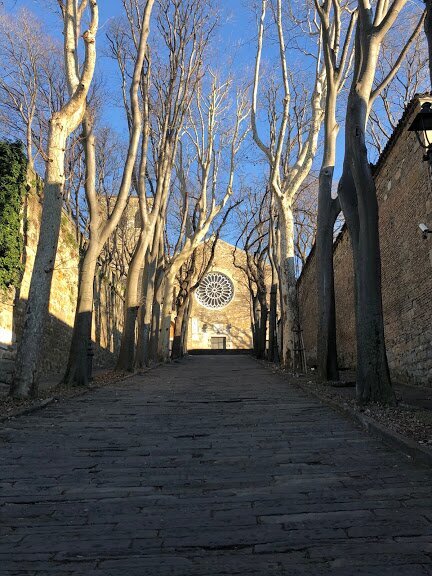
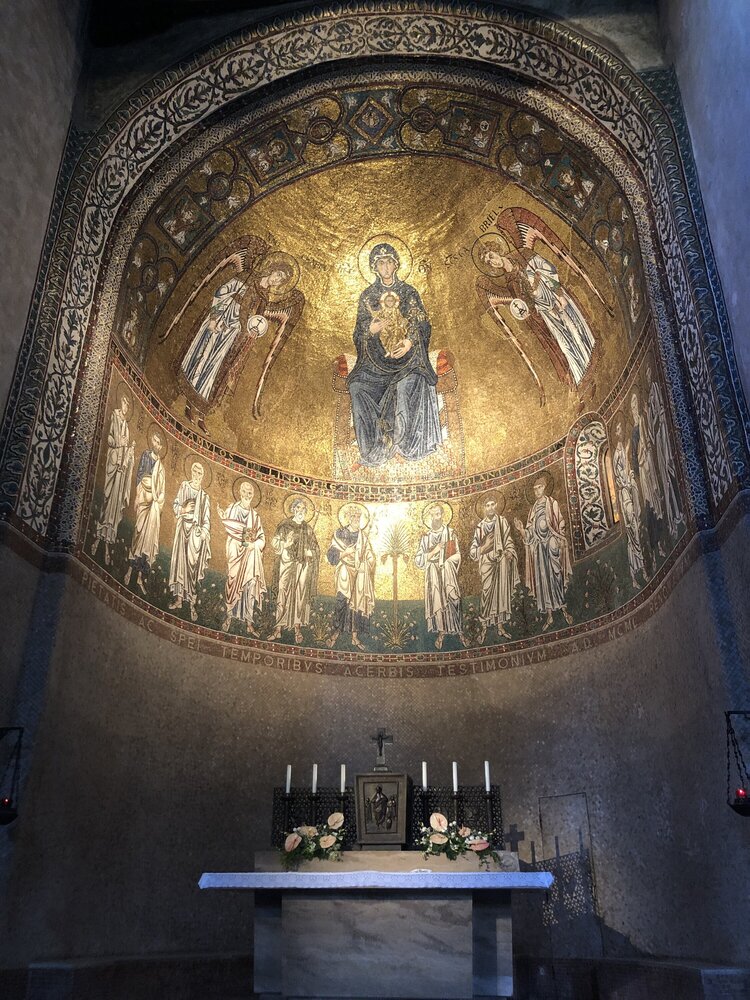
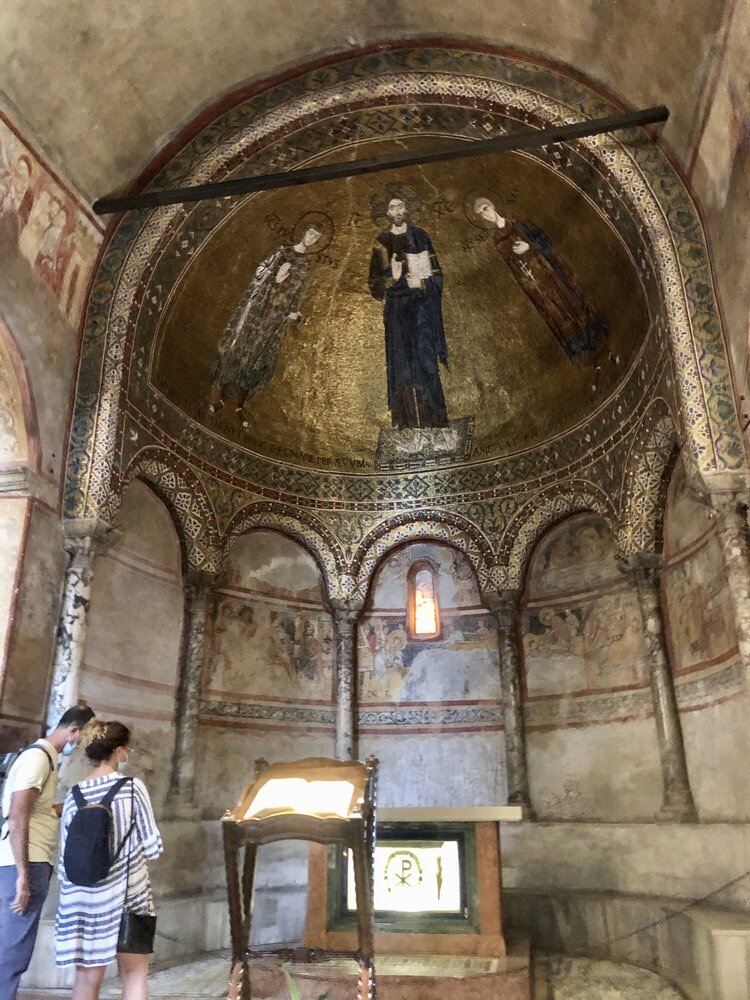
The united cathedral was consecrated in honor of St. Justus. This righteous Triestinian was drowned by the Romans in the Gulf of Trieste in the 3rd century.
The cathedral is not to be missed:
- Fragments of ancient Roman mosaics in the floor - they are left over from the Capitoline Temple.
- Ancient Byzantine mosaics in the side aisles, which have survived virtually unrestored.
- Early Gothic rosette on the facade above the entrance - dates from the 14th century.
- Bell Tower - the remains of the Capitol are built into its structure, with a sculpture of Justus with a martyr's palm in his hand on the outer wall and artifacts from ancient Rome found by archaeologists inside. The bell tower can be climbed.
Also in the cathedral is the halberd of St. Sergius, which became a symbol of Trieste and is depicted on its coat of arms - according to legend, after Sergius' martyrdom in Syria, his halberd (and he was a warrior) fell from the sky in the center of the city forum, as he had promised the people of Tehran. Due to its poor condition and rust, the halberd is now hidden from view.
Also within the walls of the cathedral rest the remains of 9 members of the royal family.
- Cathedral website
- Open: Mon-Sat 07:30 to 18:30, Sun 08:00 to 20:00
- Admission: free of charge
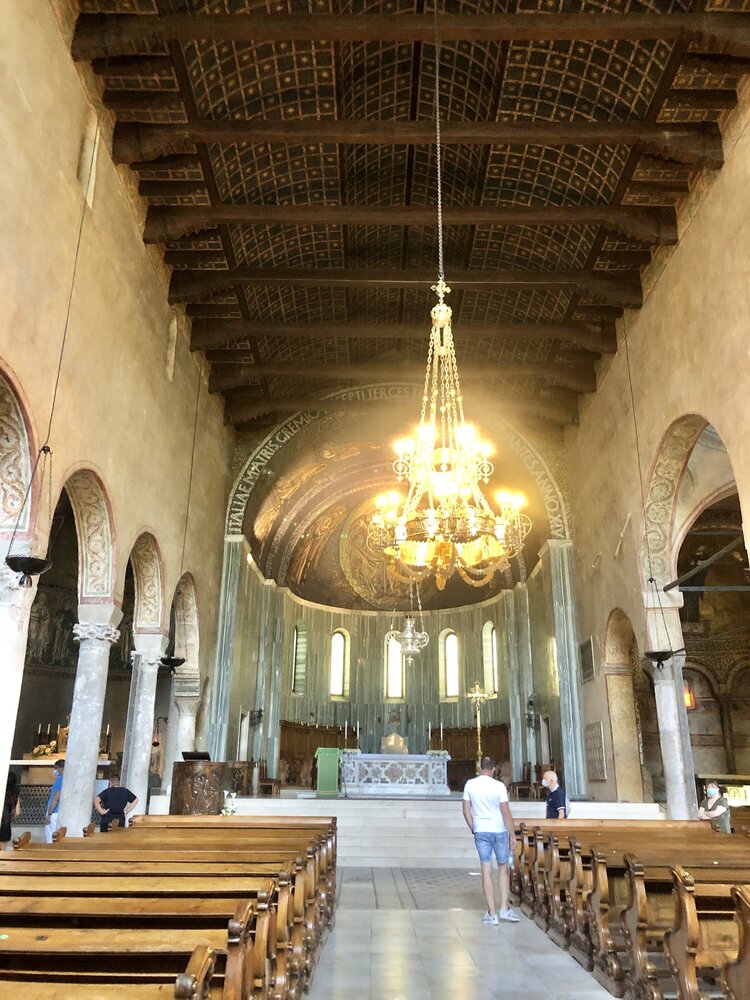
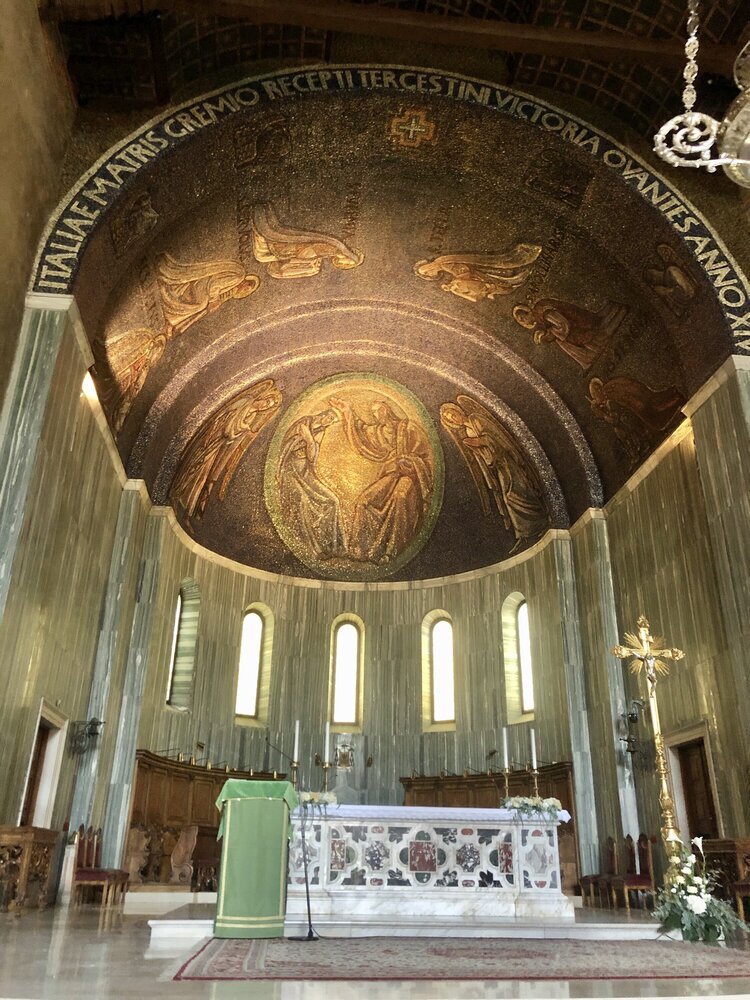
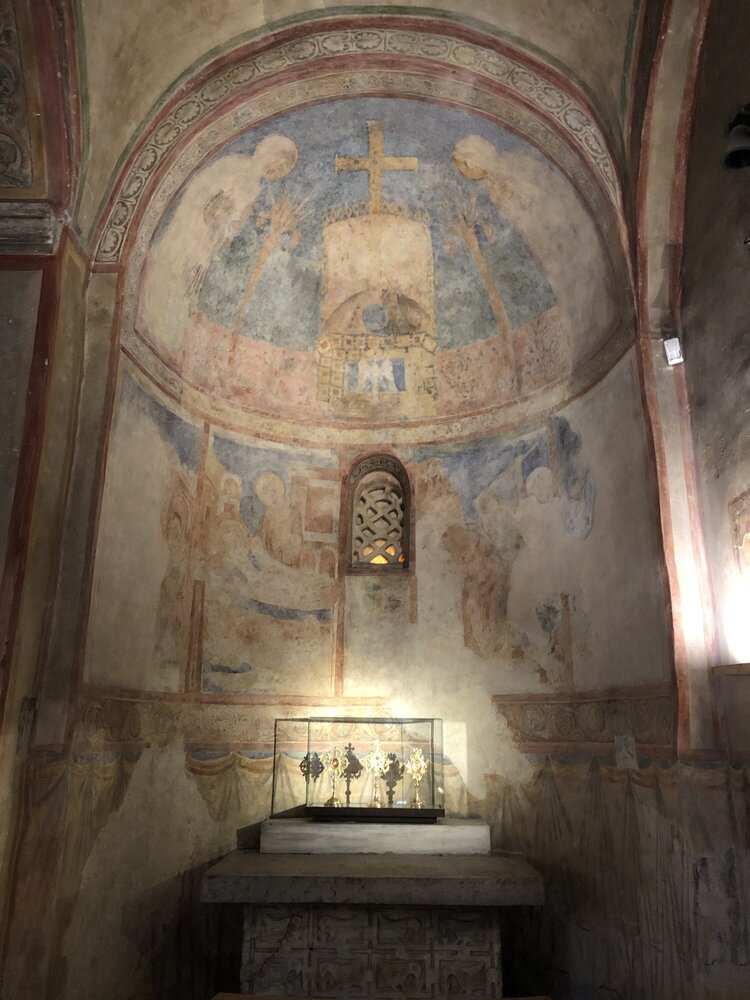
Castello di San Giusto (Castello di San Giusto)
On the hill of San Giusto near the former Capitoline Temple were the forum, court and town buildings of ancient Tergesti. Some artifacts from the Roman period are on display in the open-air Lapidarium next to the cathedral and in the Lapidarium of Tergestino in San Giusto Castle.
The Castle of St. Justus was built during the XV-XVII centuries by the Austrians to defend Trieste against the Venetians and consists of three fortified bastions. Each bastion was built at different times and therefore has a different shape: this is how the approach to the defensive buildings changed.
San Giusto Castle has never seen a real battle, so its walls are in pristine condition. They offer perhaps the best view of the city and the bay.
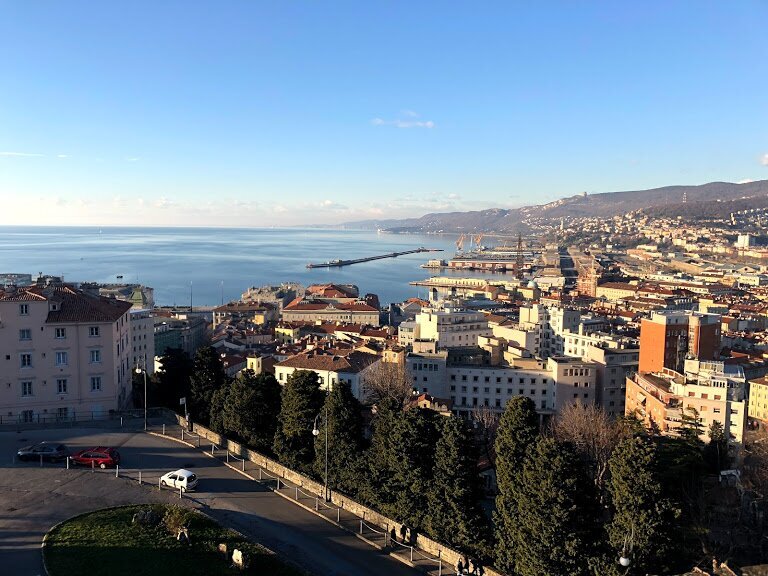
The Captain's House now houses the Museum of Arms - more than 15,000 exhibits of weapons from different times. In addition to ancient armor and weapons of XII-XIX centuries, it contains original documents from two world wars. There is also a sculpture of St. Sergio in lats with a halberd.
Another interesting museum in the castle is the Lapidario Tergestino, the Lapidarium of Targestino. Several ancient halls display Roman sculptures, bas-reliefs, funerary sarcophagi and stelae, altars, artifacts from the city walls, the forum and the Roman theater.
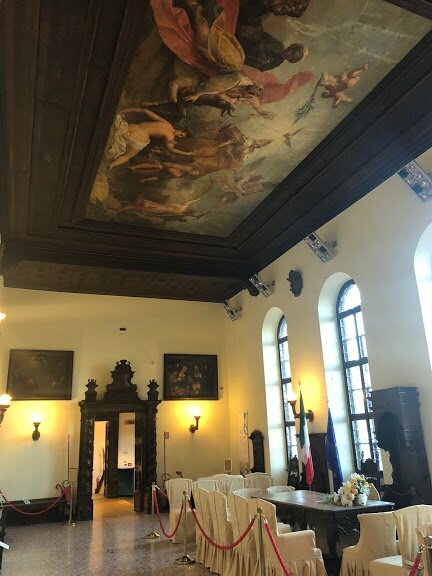
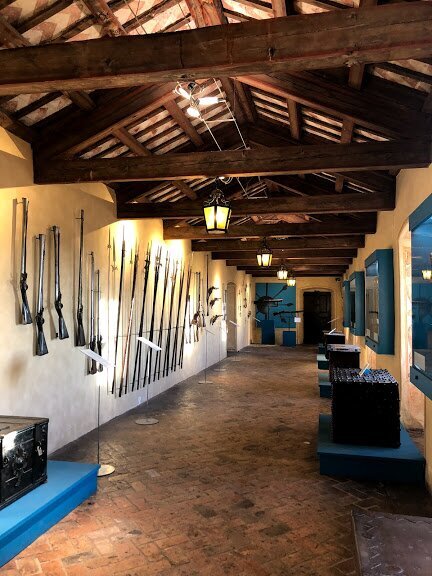
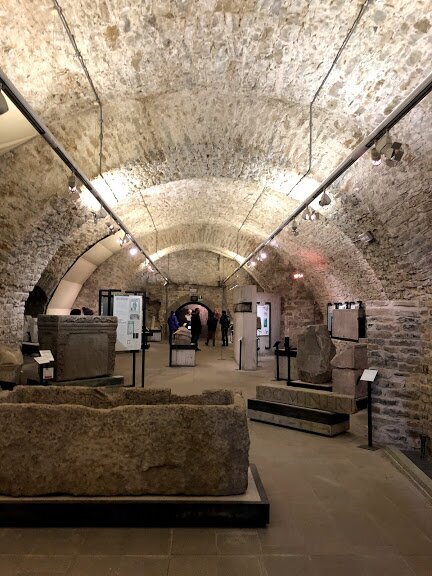
Entrance to the castle is paid, but the price is purely symbolic for a place where you can spend 2-3 hours. Even on a day off, the place is not crowded: we walked around the castle accompanied by two seagulls and only a couple of times encountered small groups of other tourists.
- The castle's website
- Open: daily from 10:00 to 19:00, Monday off in winter
- Admission: 3 €. Free admission on every first Sunday of the month from October to March.
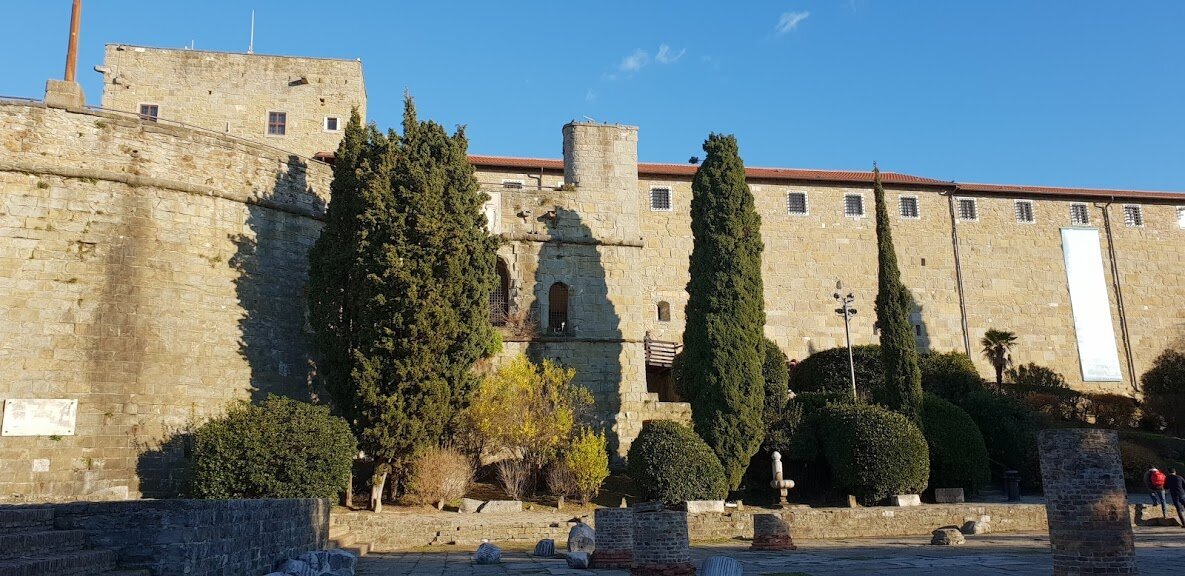
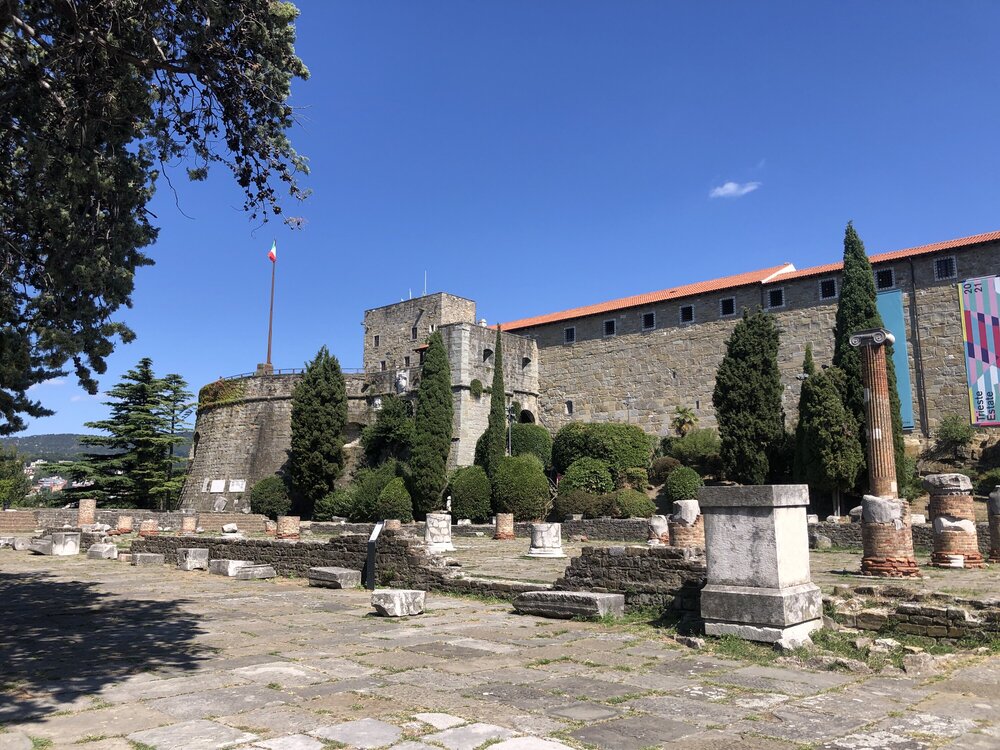
Basilica Di San Silvestro (Basilica Di San Silvestro)
According to legend, St. Sylvester seriously influenced the conversion of Emperor Constantine to Christianity, and the latter in gratitude appointed him head of the Christian clergy.
It is the oldest surviving church in the city and was built between the eleventh and twelfth centuries. A commemorative plaque states that it was the first cathedral of Trieste. The old San Silvestro organ has recently been restored and is used for church services and classical organ concerts.
- Basilica website
- Open: should be open daily, year-round from 09:00 to 12:30, but the church is almost always closed
- Admission: free of charge
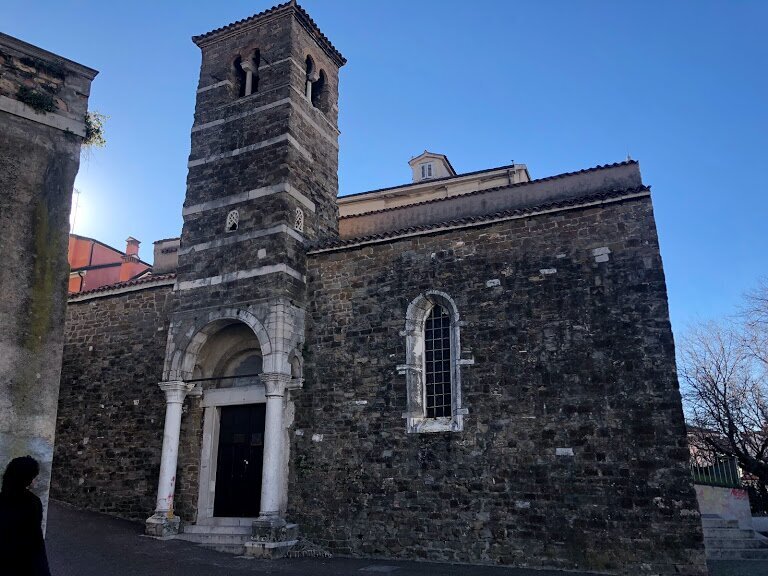
Victoria Lighthouse (Faro Della Vittoria)
The lighthouse was erected in 1927 to commemorate the sailors who died in World War I and is considered one of the tallest capital tower-type structures in the world - its height is 70 meters.
At the top is a 7-meter copper statue of the goddess Victoria. At the base is a statue of an unknown sailor and the anchor of the USS Audace, the first Italian ship to enter the port of Trieste after the end of the First World War. The sign "luce in memoria di coloro che sono morti in guerra" (shine in memory of those who died in the war) suggests two purposes - as a lighthouse and as a memorial. The beacon's rays can be seen up to 48 km away.
The first observation deck is open to tourists. There is a free guided tour once a day, and the rest of the time you can visit the lighthouse on your own. There are 15 people per day and the visit takes 15 minutes.
- Lighthouse website
- The timetable is floating, it is worth checking the website before attending.
- Admission: free.
Sanctuary of Monte Grisa (Santuario Nazionale Maria Madre e Regina)
It is an unusual church, but few tourists get to it - the church is located on a hill at an altitude of 300 meters above sea level, and you can get here either by bus or by car.
You won't miss it: the strange trapezoid-shaped reinforced concrete structure towers over Trieste and is visible even from Croatia. It was built in the 1960s, and its truncated triangle-shaped facade should be associated with the letter M - from the name of Mary. The official name of the church translates as "National Sanctuary of Mary - Mother and Queen", but it is most often called by the name of Mount Griza, on which it is located.
The church is dedicated to saving Trieste from destruction in World War II (the bishop made such a vow back in 1945), but it was made so large that it could be seen from neighboring Yugoslavia, which was seen as a threat to the Catholic principles of Italy. The highest point, which is still perfectly visible from the coastal towns of Slovenia, was chosen for this purpose.

The church is built as a pilgrimage church. On the approach to it (though from one side), the visitor walks with Christ through his last steps - these stages are traditional for the Catholic tradition, here they are represented by 12 crosses. And upstairs, right in front of the church, there is a picnic area and a café, because pilgrims need to eat.
Monte Griza is worth a visit because it is a very unusual Catholic shrine and also offers an impressive panorama of the Gulf of Trieste. The sanctuary consists of two floors, which symbolize the spiritual and human world. The upper floor is very bright, through the glass walls it shines through the sun at any time of the day. The lower temple is always in semi-darkness: according to the architect's idea, this shadow and the interweaving of rare rays of light invite people to reflection and silence.
The entire interior is filled with symbols: the letter "M" - straight or inverted - as a symbol of Mary; triangles as a symbol of the Trinity (and each pair of triangles makes an infinite "M"); bee honeycombs as a symbol of the Church; multicolored crystals as a symbol of Jesus' wounds.

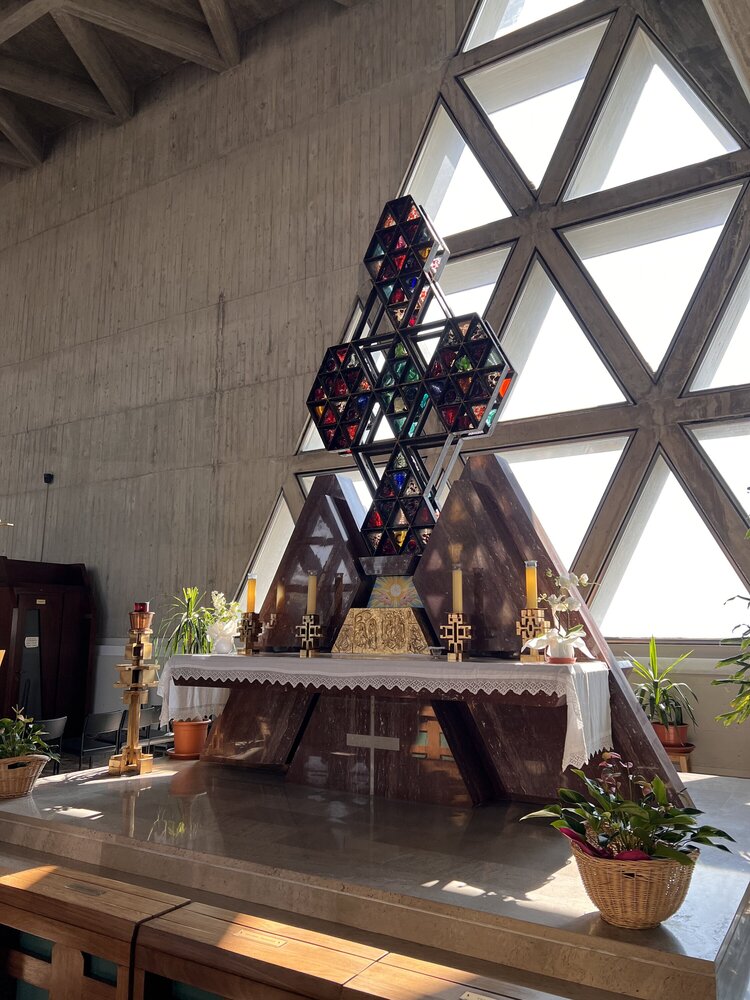
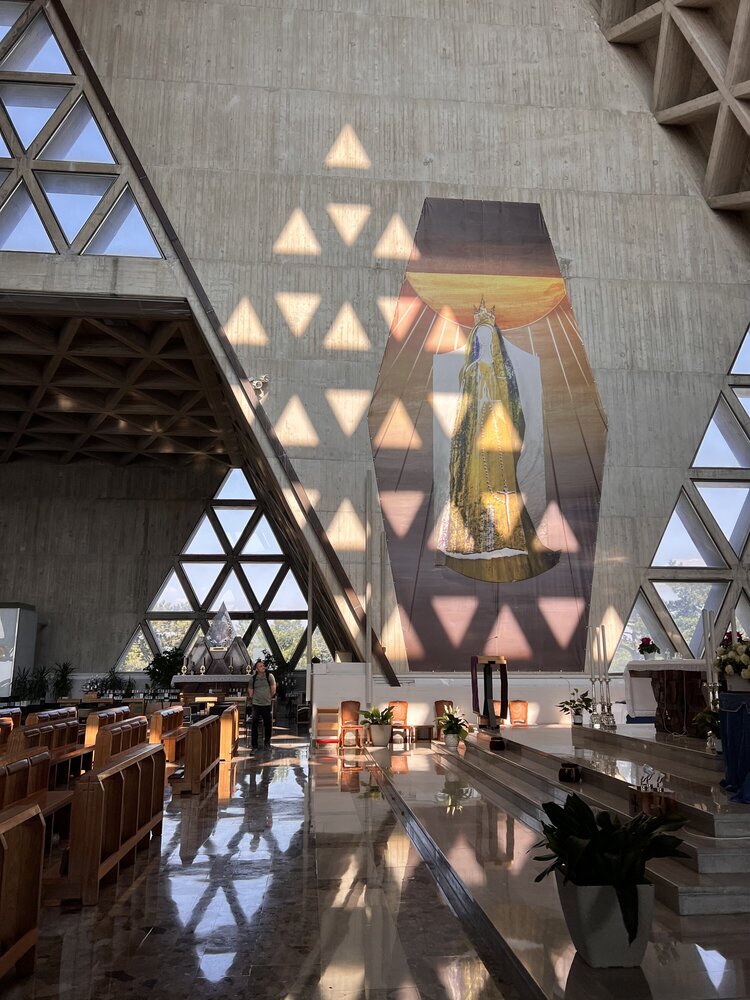
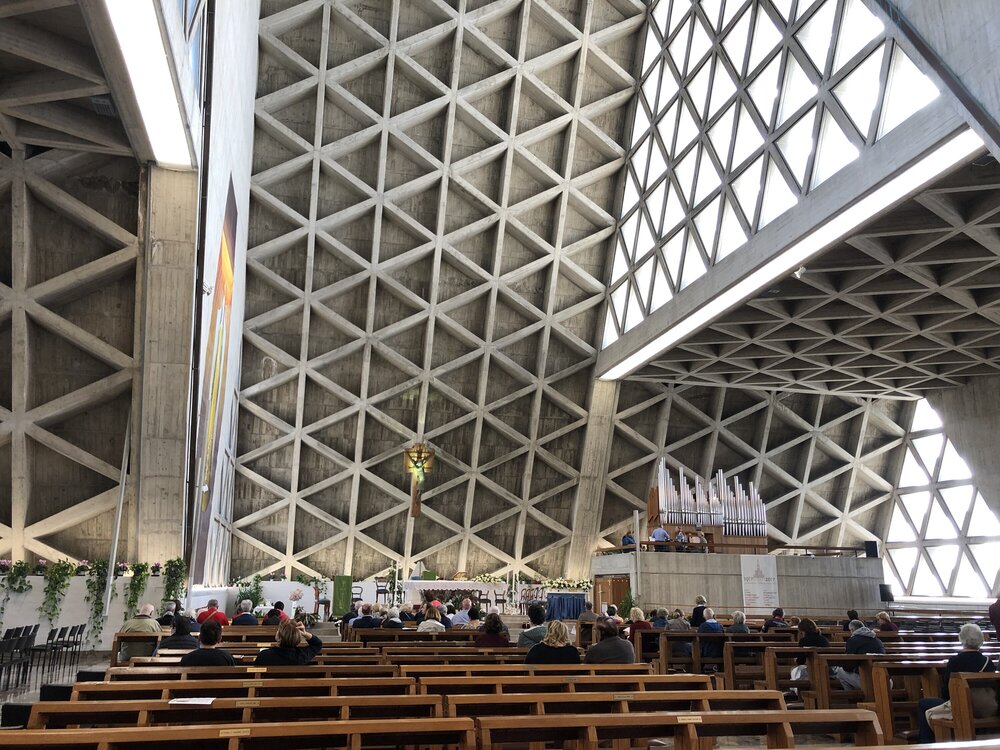
Castello di Miramare (Miramare Castle)
Beautiful and young by the standards of Europe, Miramare Castle was built only in the mid-19th century. Every inch of the park and castle is linked to the sad and romantic history of the castle's owners, the young royal couple - Archduke Maximilian, younger brother of Emperor Franz Joseph, and his wife Charlotte.
The villa was built especially for the newlyweds, but they lived here for only 3 years. According to legend, Maximilian was so jealous that Miramare became practically a prison for Charlotte, and it drove her crazy. The Archduke left for Mexico to become emperor there, but was shot 3 years later. Charlotte outlived her spouse by 60 years, spent those years in schizophrenia and didn't even know her spouse had died.
The furnishings, interiors, household items and furniture of the royal couple have been fully preserved. Around the castle there is a huge park of 22 hectares with artificial reservoirs, sculptures and unusual plants. The castle and the park are open all year round. Entrance to the park is free.
Right below the villa there is a cozy, beautiful, small beach with a gentle entrance to the sea and a small stretch of sand. There are no other areas with such a comfortable entrance to the sea along the entire coastal strip from the port of Trieste to Miramare Castle. Swimming is not allowed here: it is a marine reserve.
- Miramare Castle website
- Open: daily from 9:00 a.m. to 7:00 p.m., except December 25 and January 1
- How to get there: by public bus number 6 or on foot along the Barcola promenade from Victoria Lighthouse.
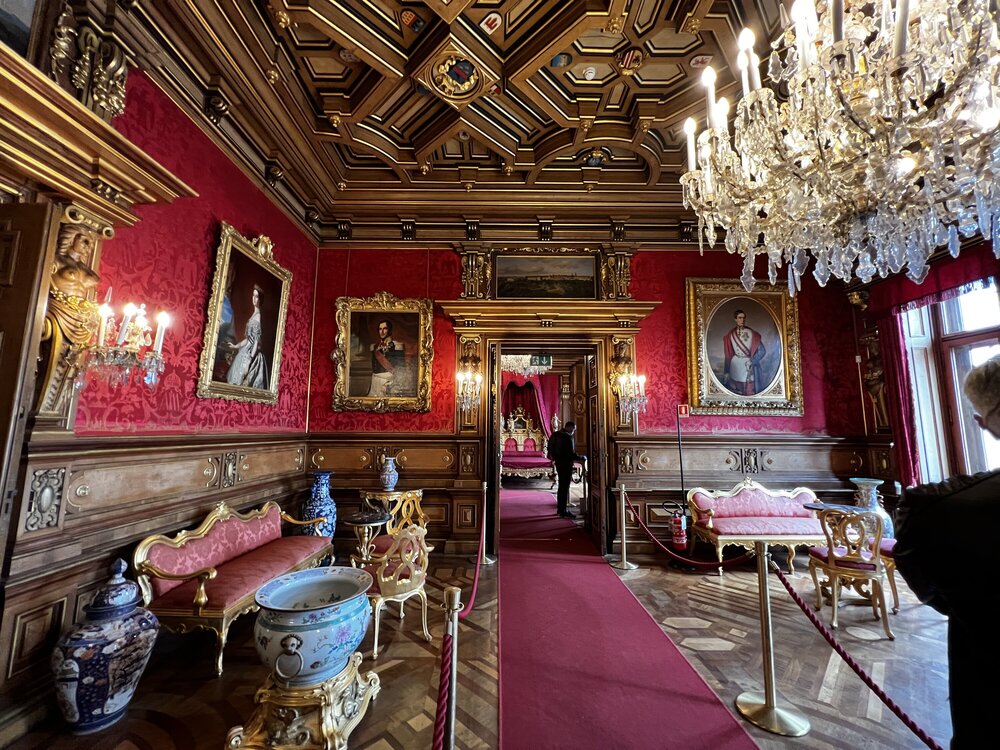
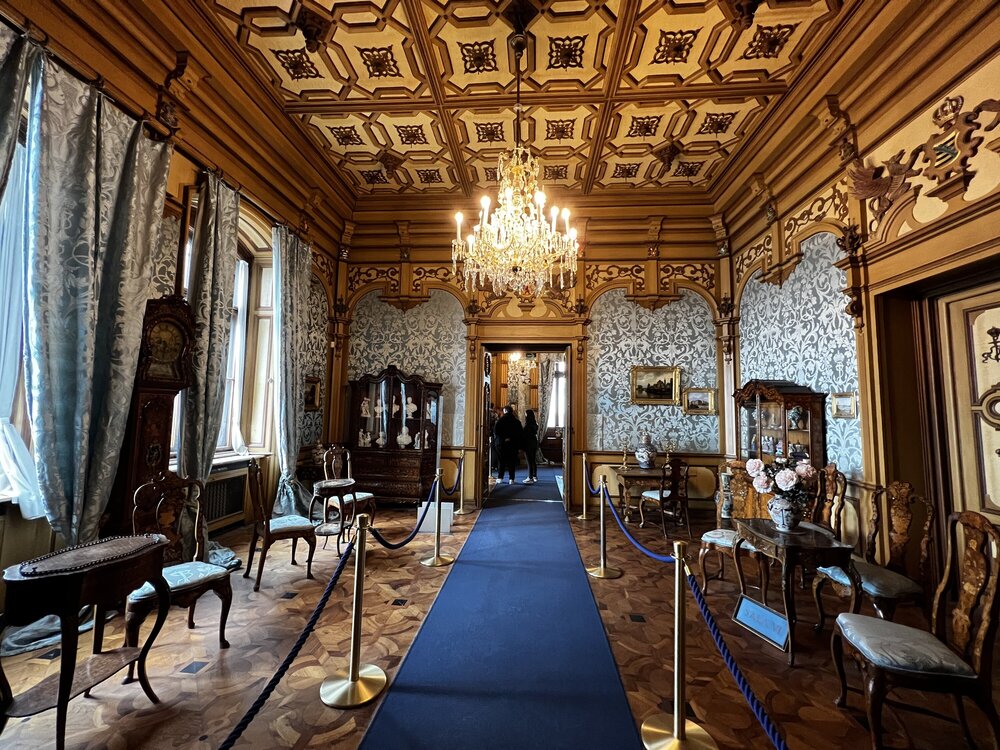
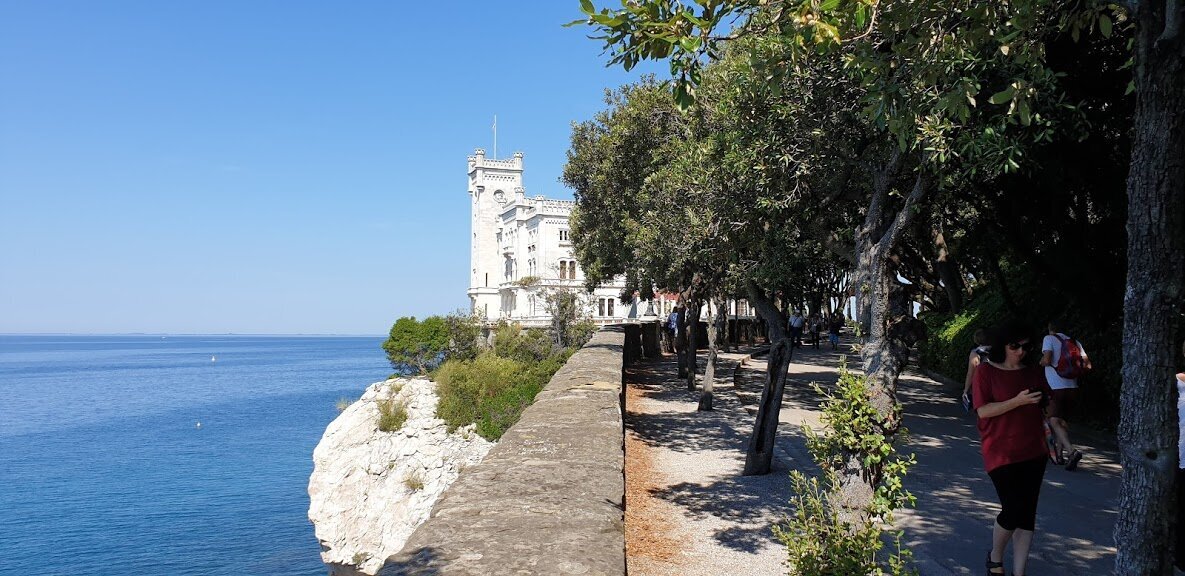
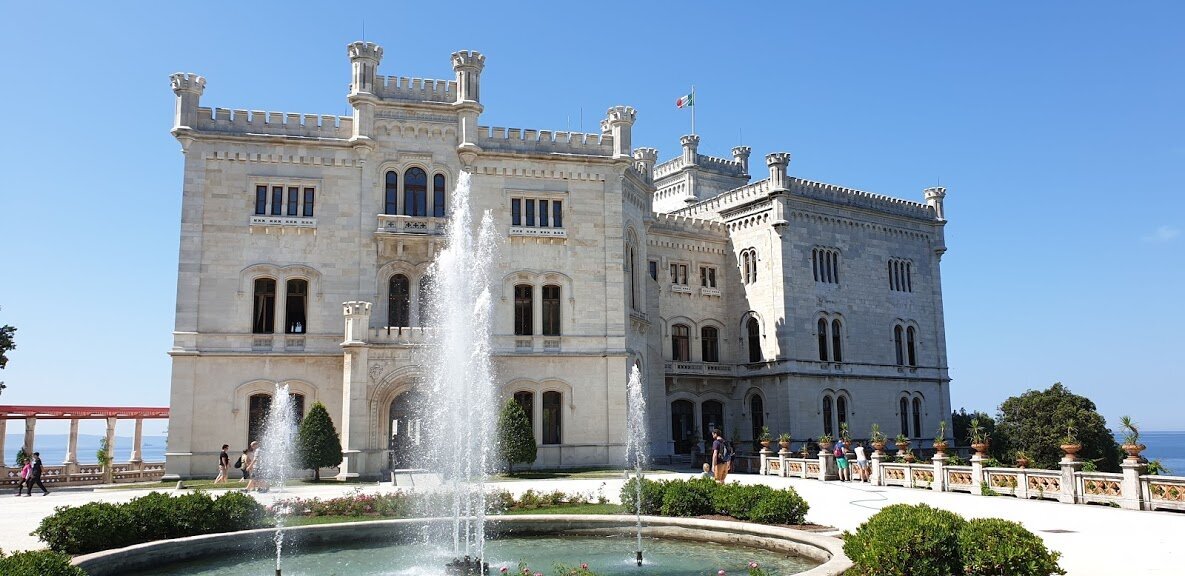
What else to do in Trieste?
In the suburbs of Trieste there is a former village of Prosecco, now part of the city and accessible by city bus. This village gave its name to the sparkling drink produced in the Friuli-Venezia Giulia and Veneto regions. It can be visited at the same time as Monte Grisa - one bus goes there, from the sanctuary you can walk to Prosecco.
Not far from Prosecco is Grotta Gigante, the second largest cave in the world open to tourists. The cave is almost entirely made up of one huge chamber, the size of which is so enormous that it even hosts concerts. Guided tours last just under an hour and include a visit to the above-ground museum. Admission: 13 €. Website and tickets here
The Barcola promenade stretches from the Victoria Lighthouse all the way to Miramare Castle. The 5 km long promenade with equipped slopes is used by the citizens as a beach. Read more about Trieste's beaches here
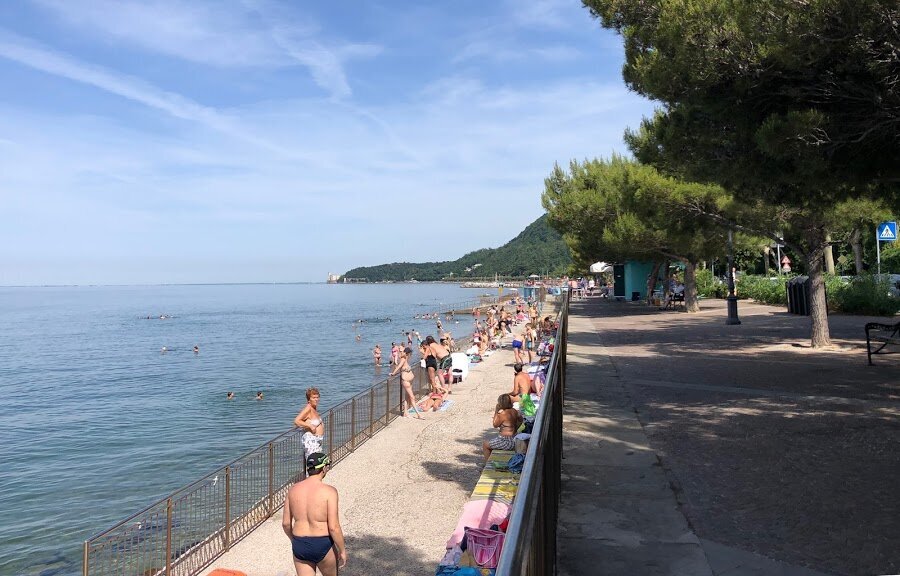
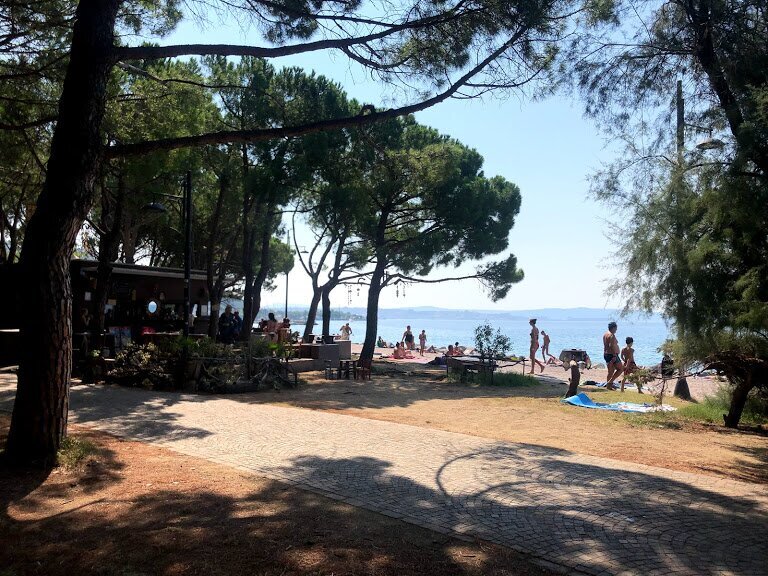
Marine aquarium (Acquario marino)
Children will have fun at the Trieste Oceanarium. The inhabitants of the Adriatic Sea are spread over 30 huge aquariums. A special exhibit is a 10,000-liter pool with sharks and rays.
- Website
- Open: from 10:00 to 19:00, weekend - Sunday
- Admission: free for children under 5 years old, under 16 years old - 3 €, adult ticket 4,5 €
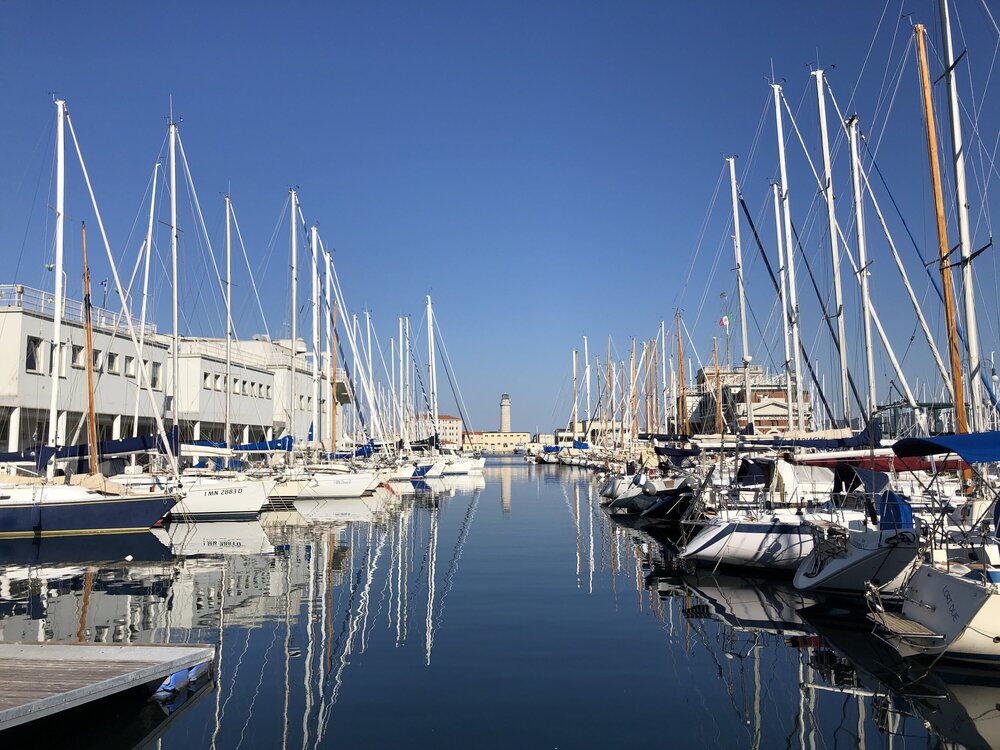
Museo Revoltella (Museum of Contemporary Art)
The art museum consists of 3 buildings with a total area of 4,000 square meters. Originally opened in the palace of Baron Revoltell, it now occupies three buildings. The collection covers paintings from the 19th century and is regularly updated with new paintings by Italian and foreign masters. The museum is worthy of attention not only because of the paintings, but also because of the fountain built by Pierre Magny.
- Website
- Open: Wed to Fri from 09:00 to 19:00
- Admission: children 3 €, adults 7 €
Parco San Giovanni and the Garden of Roses (Giardino delle rose)
The park was opened on the grounds of a psychiatric hospital and is open to residents. The rose garden in the park is one of the largest in Italy and includes more than 5,000 species of roses.
- Website
- Open: round the clock
- Admission: free of charge
Where to stay in Trieste
I often come to Trieste and prefer to spend the night in the city center - in the evening it's bustling with life, and you can't help but go for an aperitivo when the cheerful Italians fill all the bars. And it is inconvenient to spend the night outside the center for several reasons. First of all, Trieste is quite hilly, and right behind the main squares you start steep upward climbs. Secondly, you need to move around Trieste either on foot or by bus, and it is better to park your car and not to use it: the streets are very narrow, the traffic is heavy, and finding a parking place in the center is a quest for the very patient. The best option is to leave your car in a hotel parking lot or in one of the covered public garages, stay in the city center and walk everywhere.
In Trieste is not very cheap accommodation, but there are a lot of good hotels of 4* level, and the price difference between 3 and 4 stars is not so big here.
- In the very center, a room in the luxurious 4* Doubletree By Hilton or Savoia Excelsior Palace hotels costs from 144 € for two people. A simpler hotel The Modernist 4* costs from 120 €, and Solun 4* from 90 €, including breakfast.
- A room in a 3* hotel in the center costs from 70 € in Pep's Rooms by the sea - right by Piazza Unita, overlooking the sea. Good apartments Piazza Grande City Residence - from 80 €. 3* Hotel Centrale near San Antonio - from 70 €. And a room in Agli incanti near the port and 7 minutes on foot from Piazza Unita - for only 50 €.
- If you need to stay closer to the station: 4* NH Trieste from 100 € for two persons with breakfast or Albergo Alla Posta 3* from 70 € with breakfast.
- The most expensive hotel in the city center costs from 240 € for two people - it is the Grand Hotel 4* Duchi d'Aosta in Piazza Unita. The hotel's restaurant Harry's Piccolo has two Michelin stars.
Useful links
- How to get from Trieste airport to the city center
- Trieste city tourism website
- Friuli-Venezia Giulia region tourism website
- Public transportation in Trieste

